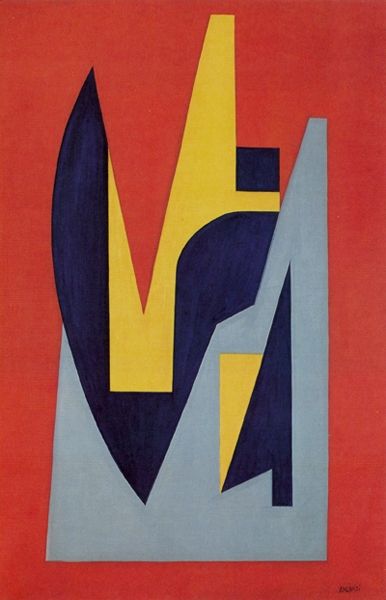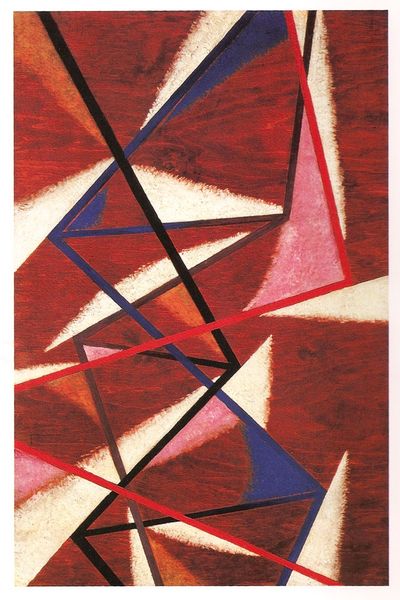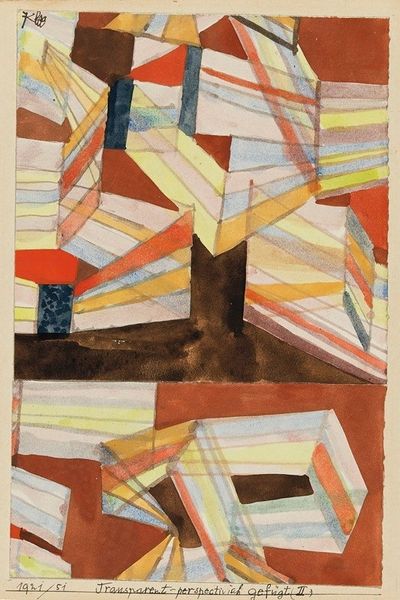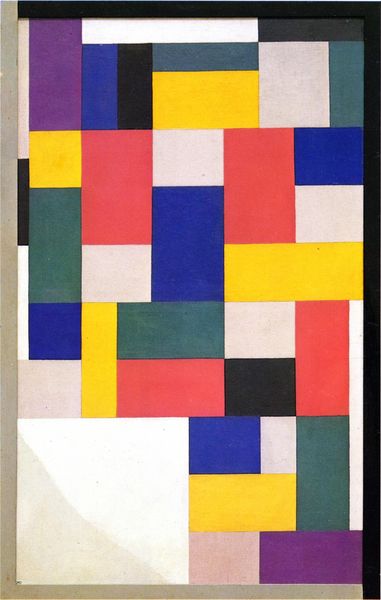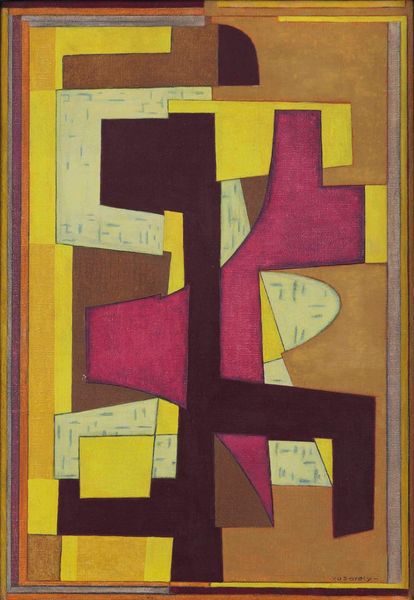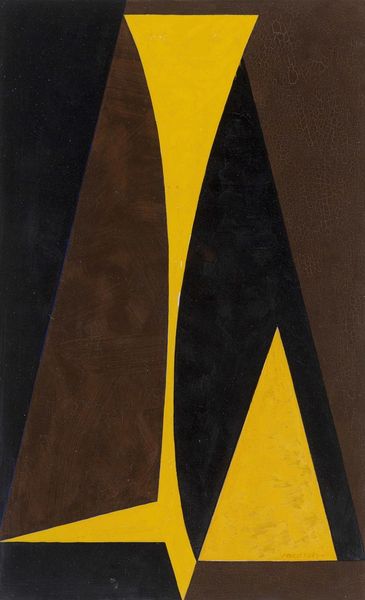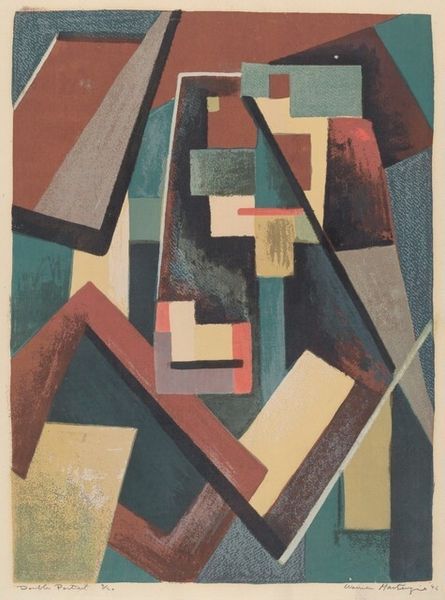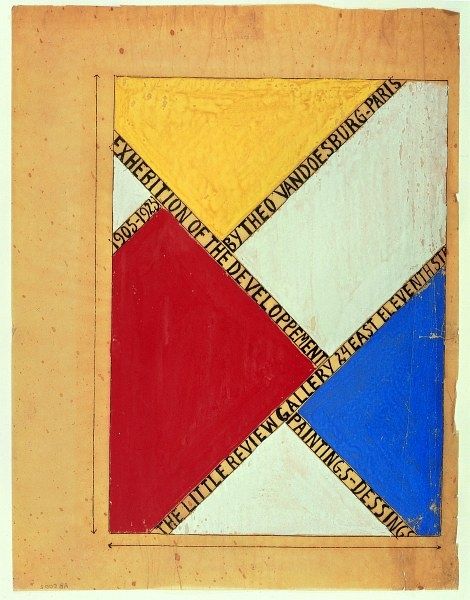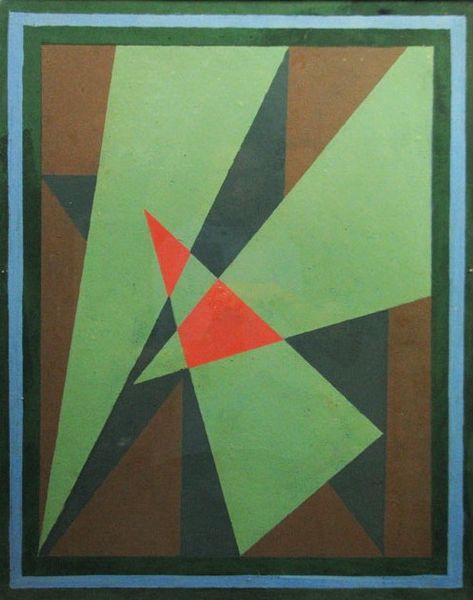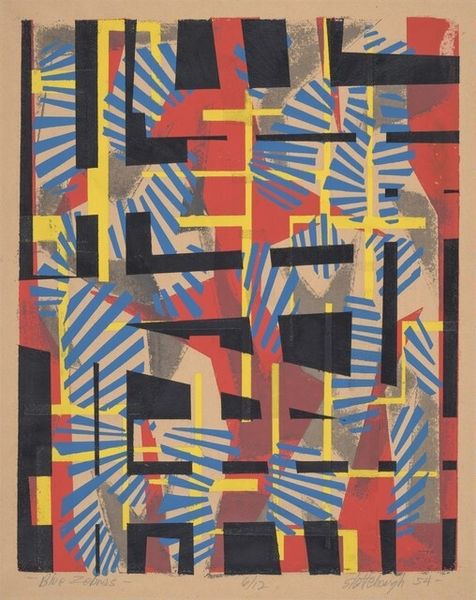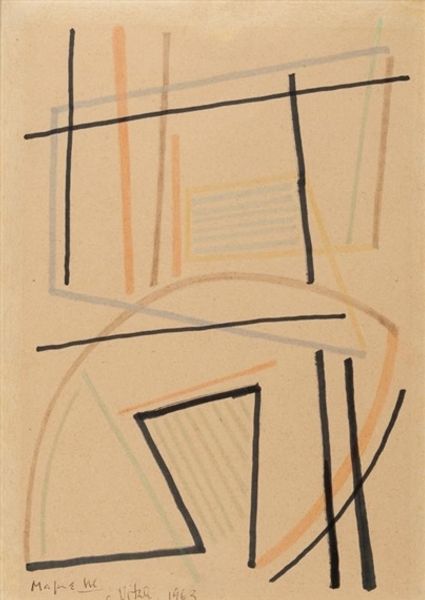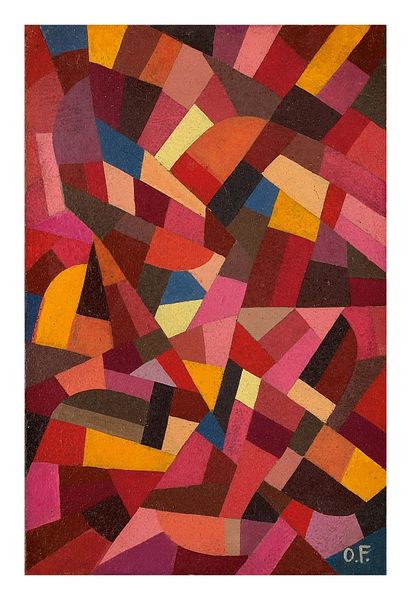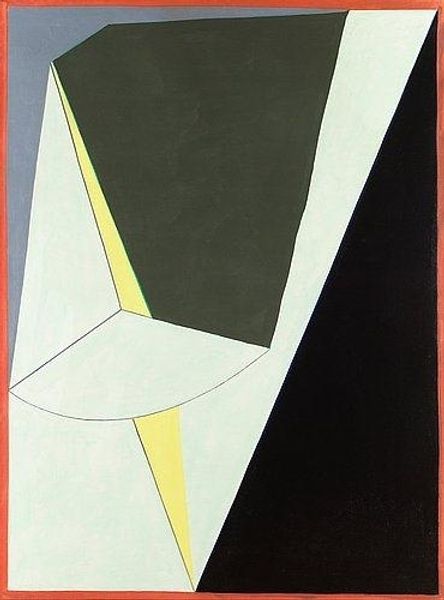
painting, acrylic-paint
#
abstract painting
#
op-art
#
painting
#
acrylic-paint
#
abstract
#
form
#
geometric pattern
#
abstract pattern
#
geometric-abstraction
#
abstraction
#
line
#
modernism
Copyright: Modern Artists: Artvee
Curator: Here we have Victor Vasarely's "HI-TA-KO," an acrylic on canvas piece created between 1948 and 1952. It's a striking example of his early geometric abstraction. Editor: My first thought? Claustrophobia. It's as though those geometric shapes are pressing in, fighting for space. There's tension there, definitely not restful. Curator: Indeed. While he is widely known as the grandfather of Op Art, "HI-TA-KO" showcases his pre-Op explorations, focusing primarily on pure form. You can almost feel his process here. Editor: Right, the triangles, the trapezoids… They aren't just shapes, they're symbols loaded with potential. I think back to Mondrian, Malevich; it's all about finding a deeper order in the chaos, using these forms as primal visual language. That gray feels really important in doing that grounding it perhaps? Curator: I would not disagree at all, color does not appear to be the only guide. In those pre-Op years, you sense Vasarely's building toward that immersive, almost dizzying effect that became his signature, through layering geometric forms. His concern seems less illusionistic space and more about shape and a system or shapes. Editor: Absolutely. I see the beginning of a system here. A sort of geometric alphabet, if you will. Each form probably holds a certain coded meaning. I bet it has something to do with perspective as his work matures! It's about making the viewer question, perceive depth, and see beyond the obvious—almost like a visual riddle of identity. Curator: Perhaps even his exploration in space. He might consider what they represent separately, but he is thinking even bigger in considering what they would mean together. "HI-TA-KO" acts as an early stage for this reason. Thank you. Editor: Thank you, it gives the eye something solid to land on before he fully let the Moire patterns lose us completely!
Comments
No comments
Be the first to comment and join the conversation on the ultimate creative platform.
